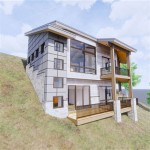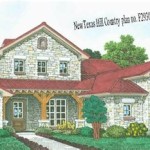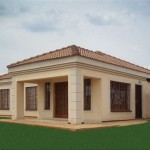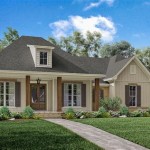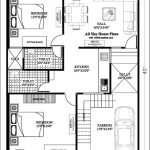Co-op Home and Cottage Plans
Co-op homes and cottages offer unique opportunities for shared ownership and communal living. Understanding the complexities involved in co-op housing, including legal structures, financial implications, and design considerations, is crucial for prospective buyers and developers alike. This article aims to explore the various aspects of co-op home and cottage plans, providing a comprehensive overview of the key elements involved.
Co-operative housing differs significantly from traditional homeownership. Residents do not own their individual units outright. Instead, they own shares in a corporation that owns the entire property, including all units and common areas. This shared ownership model grants residents the right to occupy a specific unit and participate in the governance of the cooperative.
Several legal structures govern co-op housing. The specific structure will influence the rights and responsibilities of the residents. One common structure involves a non-profit cooperative corporation, where residents are members and have voting rights. Alternatively, a for-profit structure may be employed, often used in market-rate co-ops. Understanding the legal structure is crucial for navigating the bylaws and regulations of the specific co-op.
Financial considerations for co-op homes and cottages differ from traditional mortgages. Instead of a traditional mortgage, residents typically obtain a share loan, secured by their shares in the cooperative. These loans often have different terms and requirements compared to conventional mortgages. In addition to the share loan, residents are also responsible for monthly maintenance fees, which cover operating expenses, property taxes, and underlying mortgages on the entire property.
Design considerations for co-op homes and cottages require a balance between individual unit needs and the overall aesthetic and functionality of the shared property. Individual unit plans must adhere to the co-op's overall design guidelines and may require approval from the board of directors. Considerations such as unit size, layout, and accessibility are important factors in both new construction and renovations within existing co-ops.
Common areas play a vital role in co-op living. These shared spaces, including gardens, laundry facilities, and recreational areas, foster a sense of community and provide shared amenities. The design and maintenance of these areas are typically managed by the cooperative and funded through the monthly maintenance fees. Decisions regarding these shared spaces are often made collectively by the residents, emphasizing the democratic nature of co-op living.
Governance and management are crucial aspects of successful co-op communities. A board of directors, elected by the residents, oversees the operations and finances of the cooperative. This board enforces the bylaws, manages budgets, and makes decisions regarding maintenance and improvements. Active participation from residents in the governance process is essential for the smooth functioning of the co-op.
Sustainability is becoming an increasingly important consideration in co-op home and cottage plans. Many cooperatives are exploring environmentally friendly practices, such as energy-efficient appliances, renewable energy sources, and sustainable landscaping. Implementing these practices benefits both the environment and the residents by reducing operating costs and creating a more eco-conscious community.
Choosing the right co-op involves careful consideration of various factors. Prospective residents should research the co-op's financial health, review the bylaws and regulations, and assess the condition of the property. Visiting the property and speaking with current residents can offer valuable insights into the community and its culture.
The development process for new co-op home and cottage projects involves several stages. These stages include feasibility studies, land acquisition, securing financing, design and construction, and marketing and sales. Collaboration between developers, architects, and legal professionals is essential throughout the development process to ensure the project's success.
Renovations and improvements within existing co-ops require careful planning and adherence to established procedures. Residents proposing renovations typically need to submit plans to the board of directors for approval. The board will assess the proposed changes based on factors such as building codes, aesthetic considerations, and potential impact on other residents. Clear communication and transparency throughout the renovation process are essential for minimizing disruptions and maintaining positive relationships within the co-op community.
Legal and regulatory compliance is paramount in co-op housing. Cooperatives must adhere to local, state, and federal regulations regarding housing, property management, and financial operations. Staying informed about changes in regulations and ensuring ongoing compliance are crucial for avoiding legal issues and maintaining the integrity of the cooperative.
The future of co-op home and cottage plans may involve innovative approaches to shared living and sustainable development. As housing costs continue to rise and environmental awareness grows, co-op living may become an increasingly attractive option for individuals and families seeking affordable and sustainable housing solutions.

Build A Home With Co Op The Roxboro Plan

Home Cottage Plans Co Op Plan Farm Building A New

Fancy Farmhouse Diy En Coop Reveal Southern Revivals

Co Op Home Building Solutions Cornerstone

7 Beautiful En Houses French Country Cottage

Sunrise En Coop Plans And Progress Pictures Diy Designs

48 Diy En Coops Coop Plans You Can Build

En Coop Reveal Cottonwood Shanty
Construction Projects Made Easy Central Alberta Co Op

Home And Building Solutions Evergreen Co Op

